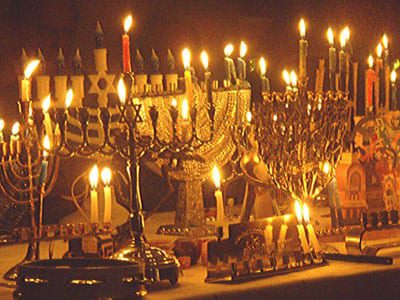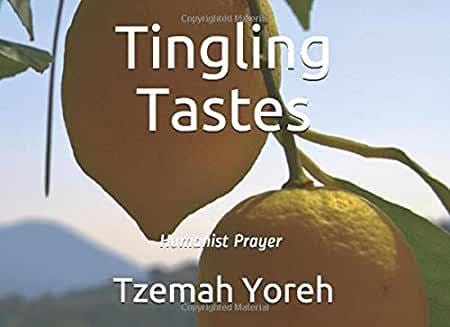Idenitities
Lina M.
Yom Kippur 2019
All people embody multiple identities. Our identifiers describe our relationships, the way we relate to the people and places around us. Among many other things, I am a sister — to Elizabeth. Without Liz, this identifier would not exist for me. There’s no sisterhood in a vacuum.
Until very recently, saying “I am a Jew” also denoted a specific relationship of sorts. These days, it can signify myriad distinct identities, existing in concert with infinite other identities across the diaspora. As an American Jew, I was born into a dual identity, and a struggle for primacy – that is to say, am I a Jewish American, or an American Jew? Which comes first? And how do I prioritize?
And, of course, the more facets of identity I can claim, the more complex it gets. Am I a gay American Jewish woman, or an American Jewish lesbian? What’s the difference? Sometimes, the decision is made for me. Every new hate crime statistic reminds me that in the minds of so many around me, I am Jewish or gay — I am “other” — before I ever get to be American.
Of course, this experience is not limited to queer Jews. All diaspora Jews are familiar with the concept of otherness, though the ways in which we experience our otherness varies widely. My parents have very different experiences to mine. This is due in part to the generational divide — but even beyond that, each of their lived experiences also differs dramatically from the other.
My dad was not othered directly as a kid. He grew up with an Anglicized surname, and was a popular, athletic kid from a well-to-do home. However, that athleticism led to a football injury that required him to quit the sport. He took up soccer instead. And in the 1960s, organized soccer in the U.S. was almost entirely populated by recent immigrants, or their children.
As my dad went on to spend all of his free time around these new Americans, especially in the context of his teammates, his whole worldview shifted at a very impressionable age. To this day, my dad is fundamentally accepting of all humans. He shows dignity and respect to every person he encounters, regardless of their circumstances, or how they identify. (I mean, seriously, he can make friends with literally anybody.) Importantly, my dad is, and has always been, a vocal supporter of celebrating what makes each of us unique.
My mom had a different experience growing up. She had a recognizably Jewish surname, and faced considerable anti-Semitism, both throughout school and in early adulthood. After college, my mother — a woman and a Jew — entered the finance industry. It was 1978. You can imagine how that went.
My mom has always felt much more pressure to fit in and assimilate than my dad, and it’s no mystery why. She has made tremendous progress, but the exclusion she felt in her most formative years still manifests in her difficulty to understand and accept unapologetic otherness. She is certainly not a bigot. But she has spent so much of her life so fervently trying to blend that she just cannot wrap her head around someone intentionally embracing their otherness.
Those disparate life experiences certainly informed my parents’ approach to, well, parenting. For example: my education has not adhered to the standard model. In response, my dad has always been sympathetic, and supportive. Growing up, I got a lot of pep talks along the lines of “you just need to walk your own path!” and “you’ll be successful on your own terms!” On the other hand, my mom always tried so hard to make sure I succeeded via traditional, conventional measures — the same way everyone else did.
Spoiler alert: I did not. I had no idea what I wanted out of life when I shipped off to the University of Connecticut at seventeen. I ended up dropping out, twice. I didn’t figure out what I actually wanted to study until almost a decade later. I finally went back to school last year, and because I am now imbued with purpose, I am thriving. But going back to school, as an undergrad, in my 30s, can be a very othering experience. It’s a very different trajectory than most anybody I grew up with. 90% of my high school graduating class went on to college; all of my college friends graduated on time. Alternative life paths were just not on the table. My own sister followed a conventional undergrad path, and competed in a D1 sport, and went on to get a master’s degree in finance. Within this framework, my entire personal experience of higher education is othering.
I expected that othering to continue on campus when I returned to college last year, because I am often one of the only adults in the room. But the City University of New York is nothing like the University of Connecticut. Sure, I am one of the only adults — but everybody is one of the only something on campus. The diversity of the student body is inspiring — and reassuring. There are just so many different kinds of people that it is statistically impossible for any one person to feel othered.
I don’t think I fully appreciated the blessing of this dynamic — this community of others — until I traveled to Nashville on vacation last fall. I felt quite on edge after we arrived, and it took me a few days to realize that what was creeping me out was the sameness. Everyone around me looked, spoke, and even dressed the same. It was overwhelmingly white, and we passed more than one MAGA hat in the street. I am fortunate that I “pass” as a default white woman, and I can obscure my other identities when necessary for safety. But I didn’t feel especially fortunate as I pretended to be neither Jewish nor gay for the duration of the trip.
We flew home from Tennessee on a Tuesday, and I had class that night. I went to campus almost directly from the airport. When I got in the elevator to go to class, I looked around, and I realized that in this big packed noisy space, not a single person was speaking English — what you might call a quintessential New York experience. My shoulders immediately relaxed, and the tension drained out of me, and in that moment I realized: I feel least othered, not when I am surrounded by people who look just like me, but when I am surrounded by people who are all different.
And that’s when I learned exactly how to prioritize my identities. No matter how many identities I lay claim to — woman, lesbian, American, student, daughter, sister, Jew — above all else,
I am a New Yorker.



